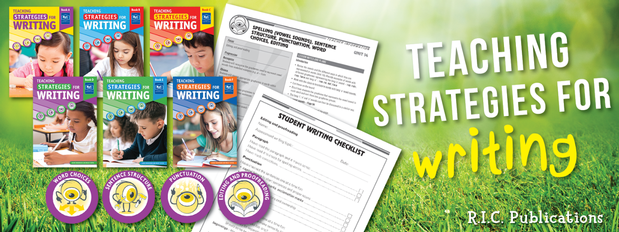- Monday 11 June 2018
- 0 Comments
Introduction
Teaching strategies for writing is a series of six books with the explicit, overarching aim of teaching the skills and strategies required to improve the clarity, correctness and richness of children's writing. Within the series, they are taught to recognise, choose and use specific strategies. As in the series Teaching comprehension strategies, the focus is on the process, rather than on practising, in this instance, specific text types. To this end, priority is given to improving writing at the sentence level.
There is a strong hands-on emphasis; that is, there is an expectation that the children will write to demonstrate their knowledge and understanding. Unlike many other writing workbooks, the desired outcome is to have the learners structuring correct, enriched sentences to more clearly convey ideas and information. The ultimate goal is for them to produce clear, precise writing for a specific purpose and to understand that proofreading and editing is an integral part of the writing process.
Structure
The books are divided into four sections:
- word choices
- sentence structure
- punctuation
- editing/proofreading
Each section has four work units and one assessment unit of four pages with a related writing topic.
Each six-page work unit has a specified focus, two teacher pages and four activity pages.
Worksheets
In the 'Word choice' section, different texts (as distinct from text types) are provided as a stimulus and for teacher–learner analysis. They have been written purposely to be used as teaching tools for teachers to complete with their class and not always as exemplars of 'good' writing.
The worksheets have been designed for teachers to work on with their class. Some children may be able to complete the sheets independently to consolidate their learning; others may need continued teacher assistance to do so.
Where writing tasks are presented, they are based on a paragraph, rather than a complete text. This is, again, to measure designed to focus on writing at the sentence level.
Assessment
Each of the 16 units has a page of assessment activities and an assessment writing topic. These should be worked independently and will (a) give the teacher a record of individual understanding and achievement, and (b) highlight common points of weakness, which may require further assistance.
Recording
Teacher recording sheets, a student proofreading checklist and a student self-evaluation sheet are provided.
